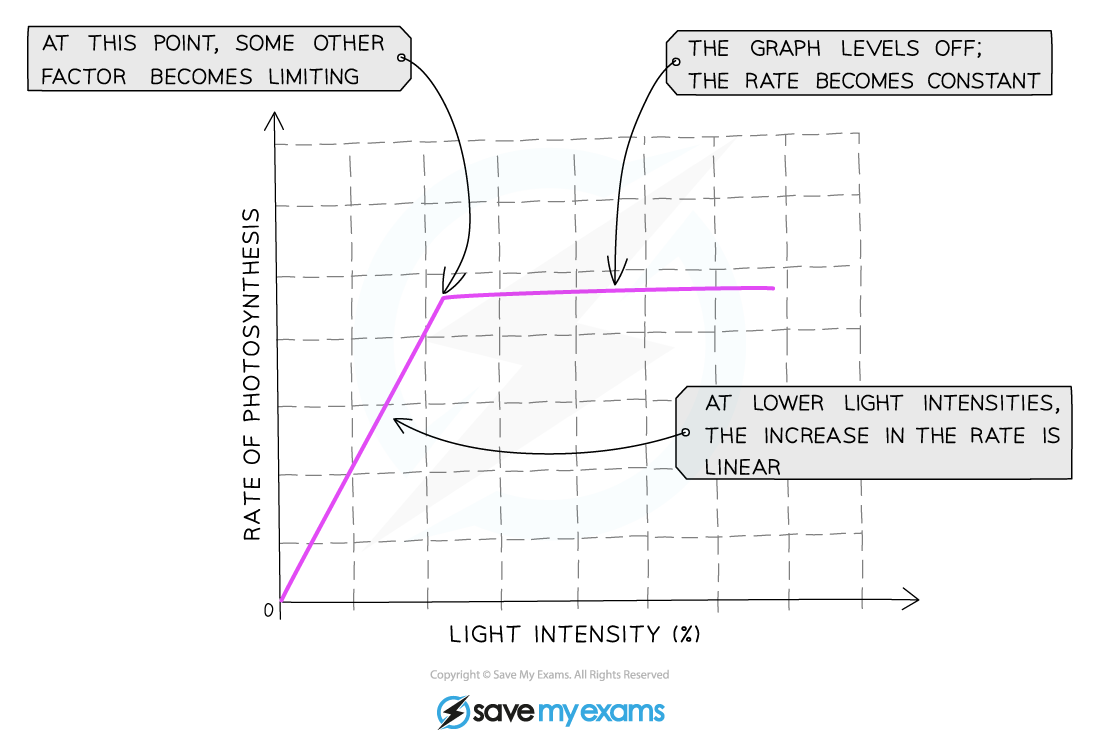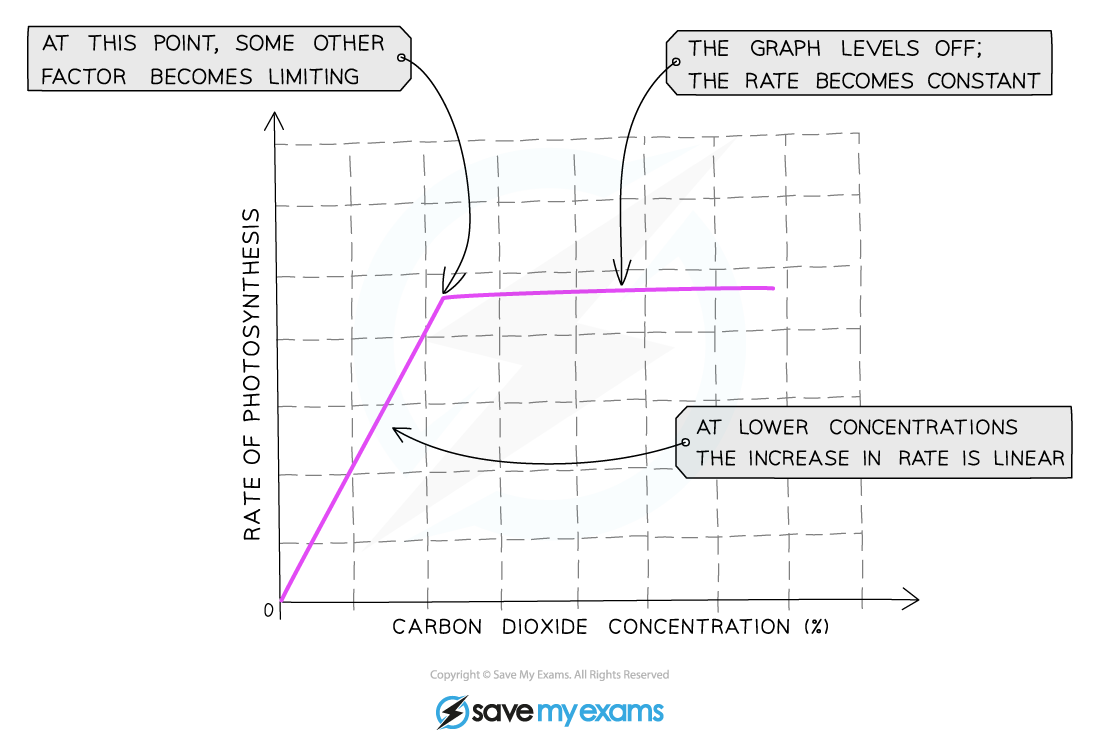Limiting Factors (Cambridge (CIE) IGCSE Biology): Revision Note
Exam code: 0610 & 0970
Did this video help you?
Limiting Factors: Extended
Extended Tier Only
If a plant is given unlimited sunlight, carbon dioxide and water and is at a warm temperature, the limit on the rate (speed) at which it can photosynthesise is its own ability to absorb these materials and make them react
However, most often plants do not have unlimited supplies of their raw materials so their rate of photosynthesis is limited by whatever factor is the lowest at that time
So a limiting factor can be defined as something present in the environment in such short supply that it restricts life processes
There are three main factors which limit the rate of photosynthesis:
Temperature
Light intensity
Carbon dioxide concentration
Although water is necessary for photosynthesis, it is not considered a limiting factor as the amount needed is relatively small compared to the amount of water transpired from a plant so there is hardly ever a situation where there is not enough water for photosynthesis
Temperature
As temperature increases the rate of photosynthesis increases as the reaction is controlled by enzymes
However, as the reaction is controlled by enzymes, this trend only continues up to a certain temperature beyond which the enzymes begin to denature and the rate of reaction decreases

The effect of temperature on the rate of photosynthesis
Light intensity
The more light a plant receives, the faster the rate of photosynthesis
This trend will continue until some other factor required for photosynthesis prevents the rate from increasing further because it is now in short supply

The effect of light intensity on the rate of photosynthesis
At low light intensities, increasing the intensity will initially increase the rate of photosynthesis. At a certain point, increasing the light intensity stops increasing the rate. The rate becomes constant regardless of how much light intensity increases as something else is limiting the rate
The factors which could be limiting the rate when the line on the graph is horizontal include temperature not being high enough or not enough carbon dioxide.
Carbon dioxide concentration
Carbon dioxide is one of the raw materials required for photosynthesis
This means the more carbon dioxide that is present, the faster the reaction can occur
This trend will continue until some other factor required for photosynthesis prevents the rate from increasing further because it is now in short supply

The effect of carbon dioxide concentration on the rate of photosynthesis
The factors which could be limiting the rate when the line on the graph is horizontal include temperature not being high enough or not enough light
Examiner Tips and Tricks
Interpreting graphs of limiting factors can be confusing for many students, but it’s quite simple. In the section of the graph where the rate is increasing (the line is going up), the limiting factor is whatever the label on the x axis (the bottom axis) of the graph is. In the section of the graph where the rate is not increasing (the line is horizontal), the limiting factor will be something other than what is on the x axis – choose from temperature, light intensity or carbon dioxide concentration.

Unlock more, it's free!
Did this page help you?